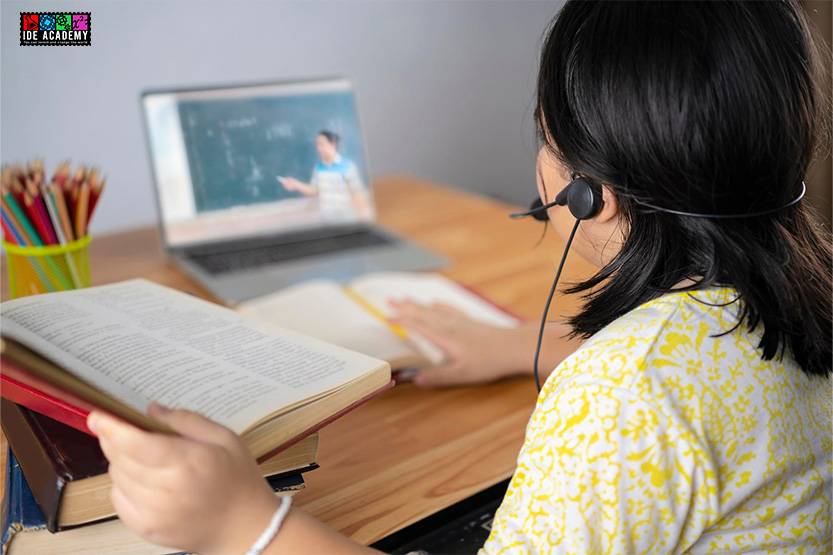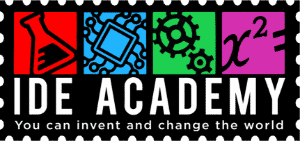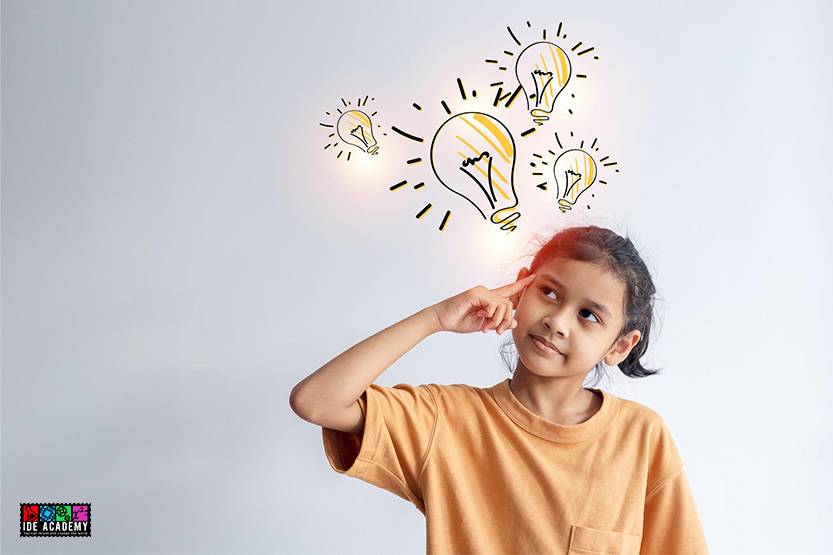The invention process is a powerful tool for inculcating an innovative mindset in students. As one of the greatest inventors of our time, Nikola Tesla, said, “Invention is the most important product of man’s creative brain”. So how does innovation come into the picture? And why is it essential in our 21st-century world? Let us share more!
The importance of invention and innovation
Invention and innovation — do they mean different things, or are they one and the same? People often use these two words interchangeably, but there are a few subtle differences between both words. Invention is about creating a completely new product or process to address a specific need.
Conversely, innovation is the process of improving upon an existing solution. Think of invention as a pebble and innovation as the ripples caused by throwing the pebble in the water. Without inventions, there will be no opportunities for us to innovate in ways that cause ripples around the world.
As you can see, an innovative mindset — or as some like to term an entrepreneurial mindset — is not only about coming up with new ideas or products. It is also about creative problem solving and finding innovative solutions to emerging needs, sometimes by repurposing what has already been invented. This is a skill that every student should develop and will require in every aspect of their life, regardless of their future careers.
Given the rapid expansion of the global economy and the advancement of tech, the ability to innovate is becoming increasingly crucial to businesses. It is no longer sufficient to maintain the status quo. Organisations must anticipate the future needs of their target market — needs shaped by current and emerging problems around the globe — in order to continue moving forward.
To adapt to these changing demands, businesses will require an innovative workforce, with people adopting an entrepreneurial mindset, to create viable solutions to address their needs. Educators have a vital role in preparing students to handle these challenges and thrive in the ‘Innovation Age’.
How can educators encourage innovation and develop an entrepreneurial mindset amongst students in the classroom?
Dedicate time for self-directed learning

The learner’s interests matter. When students are interested in a subject, learning becomes fun for them. As a result, they are more engaged during the learning session and dedicate more time to thinking about the materials. Self-directed learning can provide students with opportunities to focus on the things that fascinate them. Rather than passively trying to absorb content, personal projects involve students more deeply and encourages them to take initiative in their learning.
Consider this: if students are taught a solution to a problem, they are boxed into thinking this solution is the only way to tackle similar issues. With self-directed learning, students learn to consider and make decisions independently. If method X is not working, why not try method Y? This process encourages innovative thinking and risk-taking.
Self-directed learning does not need to take up the entire study period. Educators can consider incorporating the concept of “20% Time”, famously used by Google, in the classroom. For example, if the session is an hour-long, teachers can set aside 10 minutes or so for students to work on any project they want.
These projects can be about anything. For instance, if students are interested in robotics, encourage them to design and engineer robots that solve a problem. This can be an excellent way of learning how electric circuits work or an opportunity to learn about the different properties of materials.
Implement project-based learning in the classroom

In a traditional classroom, students are often taught how to solve a problem, without any deviations. But this is hardly a conducive way to spark creativity and develop an entrepreneurial mindset. When students are regularly exposed to the same processes daily, they lose their desire to learn.
Project-based learning (PBL) helps to create a learning environment that fosters teamwork and creativity in students. The key is to challenge students to use the tools at their disposal to develop new solutions to ever-emerging problems. This learning method sparks a natural curiosity in students, encouraging them to continue pursuing new knowledge even outside the classroom.
Similar to self-directed learning, educators should try to incorporate their students’ interest in PBL. The idea is to encourage students to utilise their passion for a given topic to identify an issue and drive the change they want to see.
Educators should also note that failure is a part of the invention process. This aspect should be acknowledged and encouraged rather than avoided or criticised. It is fine when a prototype does not work on the first try. When this happens, educators should praise their students’ efforts and engage in reflective conversations with them to discuss what works and what does not. Have students jot these notes down and include how the mistakes from this iteration can help inform the next phase.
When students succeed in their project, invite them to compare their first draft with the final iteration and consider how their past failures paved the way for a successful design. When students gain the experience of trying multiple times before succeeding, they learn to stay determined, adaptable, and embrace failure in the invention process. These are essential to fostering an innovative and entrepreneurial mindset.
Consider place-based learning

Learning can take place beyond the confines of a school environment, and the benefits are tremendous. Place-based learning recognises this. Visits to the museums are the obvious examples that come to mind, but educators should not be confined to only these options.
The location of the field trip is crucial, as the main aim is to connect students with their immediate surroundings and demonstrate how their knowledge can be applied. Teachers can plan field trips in line with ongoing lesson topics and project ideas. For example, if the class has identified a need for elderly-friendly devices to provide greater access to seniors, they can visit an old folks’ home to talk to the elderly and better understand their needs.
The best aspect of place-based learning is that it can happen anywhere. Students can seek inspiration from the places they visit rather than let the four classroom walls limit them!
Showcasing the results of an innovative and entrepreneurial mindset
Example 1: Emma’s and Sara’s Actually a Bin (A.A.B)
The environment is a hot-button issue among the youths of today, and it is undoubtedly something that weighed on the minds of Emma Yan and Sara Chua. While there are plenty of initiatives launched in Singapore to encourage recycling, the pair identified an issue with the process that is rarely addressed — recyclable materials that have been contaminated with food waste or other substances cannot be processed unless they are cleaned first. Many Singaporeans remain unaware of this fact, resulting in the recyclables getting incinerated rather than recycled.
Demonstrating an innovative and entrepreneurial mindset, Emma and Sarah developed an improved version of a recycling bin, dubbed the A.A.B. When someone recycles a contaminated item, this invention will decontaminate the recyclable material so that it can be properly recycled. It also eliminates the need for people to wash their recyclables beforehand, which may encourage more Singaporeans to recycle.
Example 2: Xinyu’s Magnetic Accessories and Storage Album (MA-SA)
Everyone needs a place to store their knick-knacks. Eventually, such storage spaces are filled to the brim with items, making it a hassle to sort through each object individually. This really bothered young Xinyu, who finds herself stuck with a messy storage box overflowing with hair clips.
Tapping into her innovative and entrepreneurial mindset, Xinyu took inspiration from the velcro present in her dressing dolls to design a unique storage container in the form of a book. By placing velcro onto a piece of cardboard and turning it into a book, she was able to store multiple hair clips on each “page” of the “book” without worrying about running out of space.
However, this prototype came with a design flaw — the velcro would fall off with the constant sticking and peeling of the hair clips from the velcro strip. Xinyu had to go back to the drawing board to develop a new design. Eventually, she discovered a much better way of storing her hair clips by combining magnets with her favourite accessories, allowing her to keep her hair clips neatly in a storage album. Those interested in learning more can view the video documenting her entire process.
The ability to innovate does not occur overnight. While there are numerous innovative individuals, the traits they display are often inculcated from a young age through exploration and experimentation. This is where the role of an educator is crucial. By engaging their students in the invention process through activities that invite participation and initiate critical thinking to resolve pressing problems, teachers can help students develop an innovative and entrepreneurial mindset, preparing them for the future.
Not sure where to begin? IDE Academy can help you get started. We offer professional development courses in Singapore to educators interested in learning how to connect STEM foundational skills with invention education to develop a strong problem-solving mindset in their students. Do not hesitate to contact us today to learn more about our programmes.




